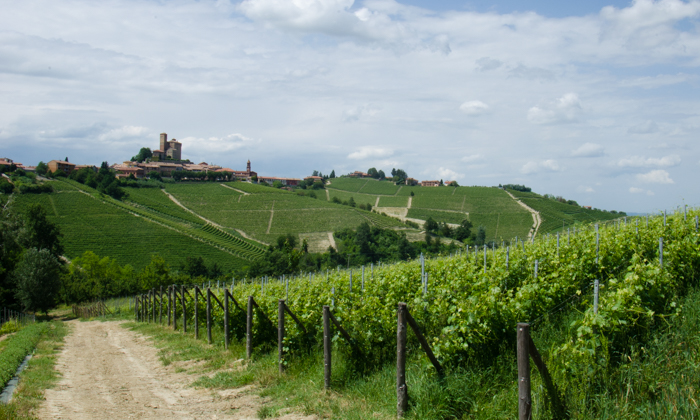
Walking through the countryside of the Langhe hills in the Barolo wine zone, pristine picturesque vineyards stretch as far as the eye can see. Home to one of Italy’s most prestigious wine, almost every square inch is devoted to the cultivation of the Nebbiolo grape. But as I approach the Rivetto winery, I notice subtle changes to the landscape. No longer uniformed vineyards, I spot a field of grain here, a vegetable garden and compost area there, fruit and nut trees and herbs line the dirt roads that weave through the property. Why does a vineyard owner, whose livelihood rests on the sale of wine, devote precious real estate to crops that don’t make money? Is the owner simply not the best business person, or is there a reason behind his actions?
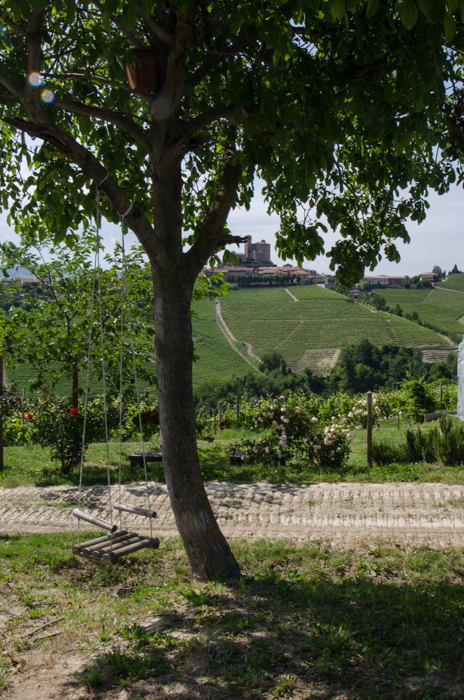
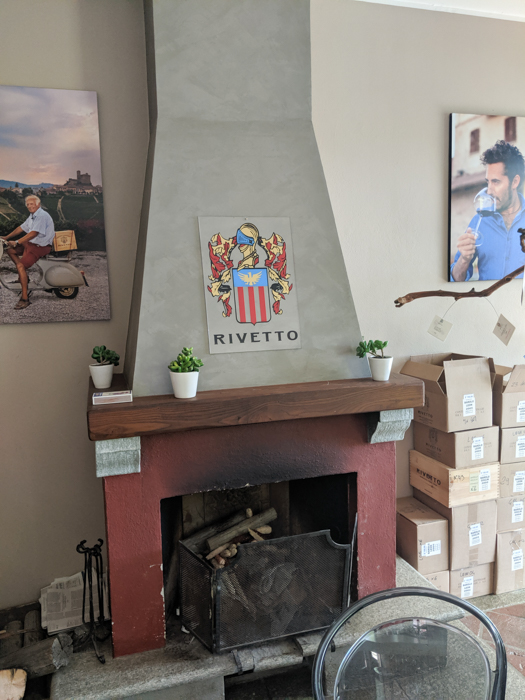
The latter, of course. The current owner, Enrico Rivetto, is a 4th generation winemaker who, in 2009 made the conscious decision to diversify. The cultivation of grapes in this area dates back thousands of years. But until about 150 years ago, grape vines here in Italy were not planted in ‘vineyards”, but grew alongside a multitude of crops, everything a farming family needed to survive. Woodlands covered much of these hills. Only when Barolo became one of the world’s most sought after wines were fields replanted, woodlands eliminated, creating what is today essentially a monoculture. As Enrico says, “Once one realizes the real effects this has on the environment, the need of a radical change towards an agriculture that is compatible and in sync with nature, land and men emerges.” The winery was officially certified organic in 2013, and in 2015 they adopted biodynamic practices. Just recently, in December of 2019 Rivetto became the first Barolo and Barbaresco winery to be officially certified biodynamic by Demeter International. Today the winery consists of 15 hectares of vineyards, 6 hectares of woodlands, 6 hectares of nut trees and 1 hectare dedicated to alternative crops – almost 50% of its land devoted to sustainability.
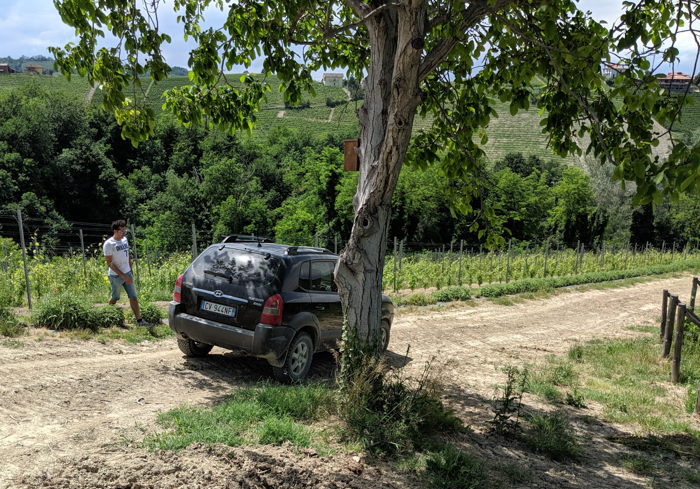
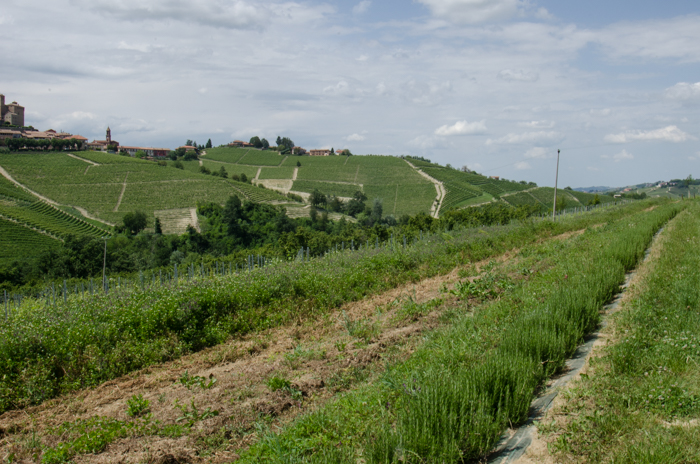
Enrico drives us down a dirt farm path pointing out the various crops he has introduced to his land, all against the spectacular backdrop – the lovely town of Serralunga d’Alba. There is a greenhouse housing vegetables, followed by an area filled with rosebushes. Sage and rosemary line the sides of the road, and I learn that the oils of these herbs are natural fungicides. Enrico hops out of the car from time to time to check on a few recently planted peach trees. He points out a field of oats in the distance, and we pass a quite large hay field that could have held more than a few grape vines, instead home today to a few large bales of hay. We make one final stop to visit an old root cellar, where Enrico’s great grandfather hid food from the Germans during the wars. Then off to tour the modern wine production facility.
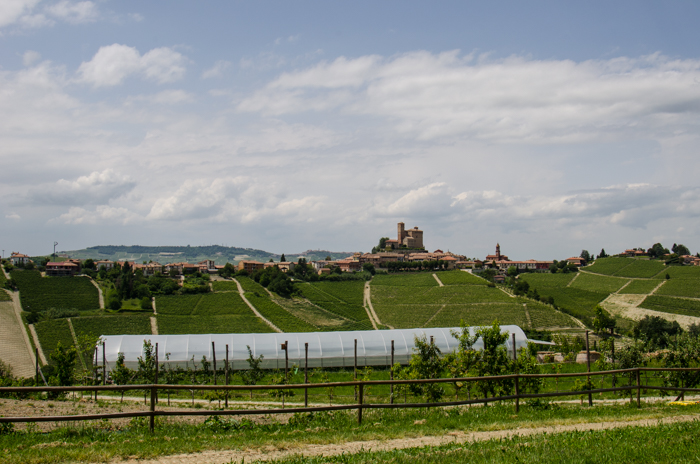
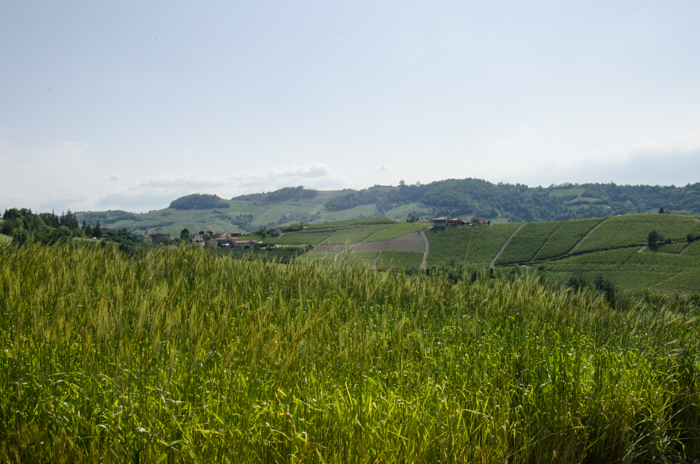
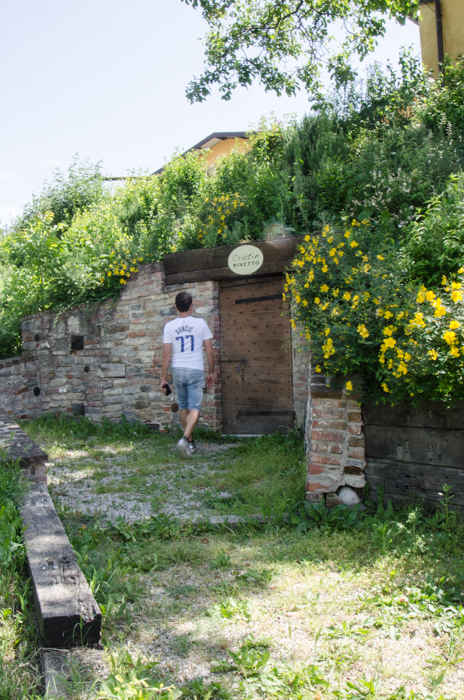
Enrico shows me through the cellar, sharing his minimal intervention philosophy. His preference for natural yeasts, spontaneous fermentation. We stop to note the one item that stands out from the multitude of cellars I’ve toured – a line of terracotta amphora. An experiment, Enrico tells me. The ancient Greeks and Romans produced and stored their wines in amphora, and terracotta still possesses qualities beneficial to the wine-making process. Terracotta does not impart any flavor, allowing wines to display all of the delicate fruit aromatics and flavors of the grape. Unlike oak, terracotta is inorganic, and does not harbor micro-organisms that can spoil, thus reducing the levels of sulfur needed to safeguard the wine. And terracotta ‘breathes’, allowing oxygen to play a role in the wine making process, developing mouthfeel and amplifying aromatics and flavors. Enrico has swaddled each in a blanket of plastic wrap, as the oxidation through the terracotta was proving a bit too much for his liking. The challenge of low-tech wine production.
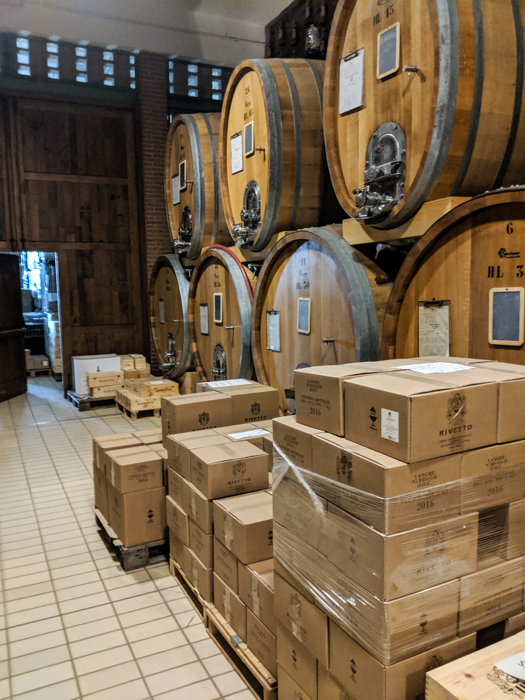
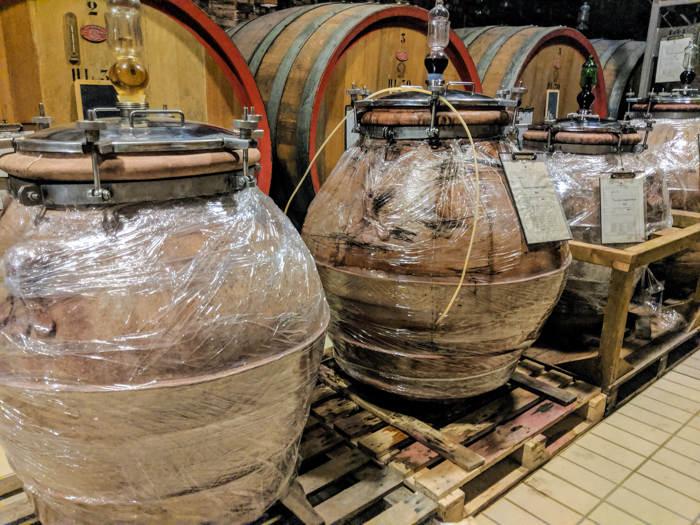
Finally, off to the tasting room. Enrico leaves me in the capable hands of Biljana, and we sample many of Rivetto’s wonderful wines.
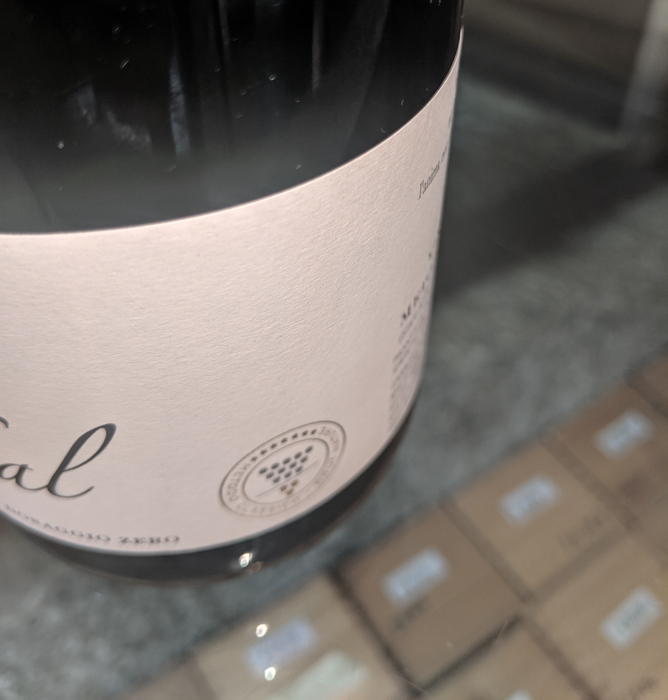
We start with a first for me – a sparkling Nebbiolo. Biljana describes the 3 pass harvest process for Nebbiolo, depicted by the logo on the label. The first pass takes the bottom third of a grape cluster; these grapes, still with a nice level of acidity, are used for the sparkling Nebbiolo. The second pass claims the middle third, used for the dry Nebbiolo wines sold under the Langhe designation. The top third, most exposed to the sun and harvested last, is destined for Barolo. The sparkling Nebbiolo, produced using the classic champagne method, is named Kaskal, which in the ancient Sumeric language it means “The way to the king”. 100% Nebbiolo, extra brut, with 45 months on the lees. Rich yellow in color, with persistent fine bubbles. Aromas of fresh baked bread, honey and figs. Well balanced palate, crisp acidity and great mouthfeel.
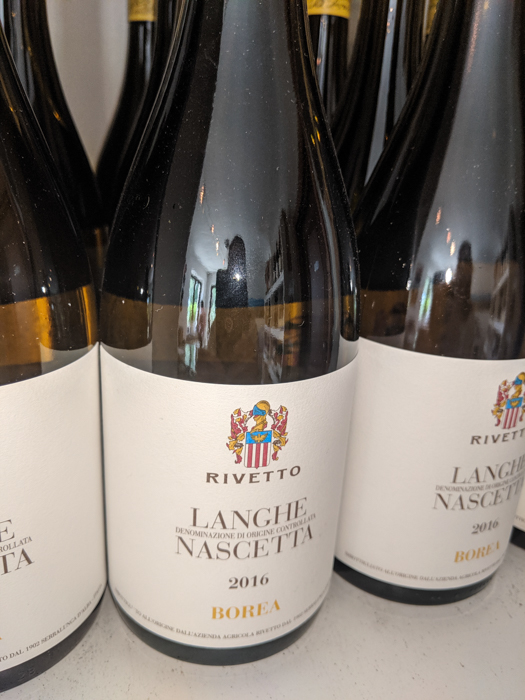
To follow, another wine I had not experienced before – made from an indigenous white grape called Nascetta. This is a semi-aromatic grape native to Langhe with excellent ageing potential. Historical texts liken it to the great wines of Rhine. Yellowish gold in color, aromas of tropical fruit. The palate is fresh and mineral with a crisp acidity. Pair shrimp with citrus, scallops with vegetables, oysters, spring risotto.
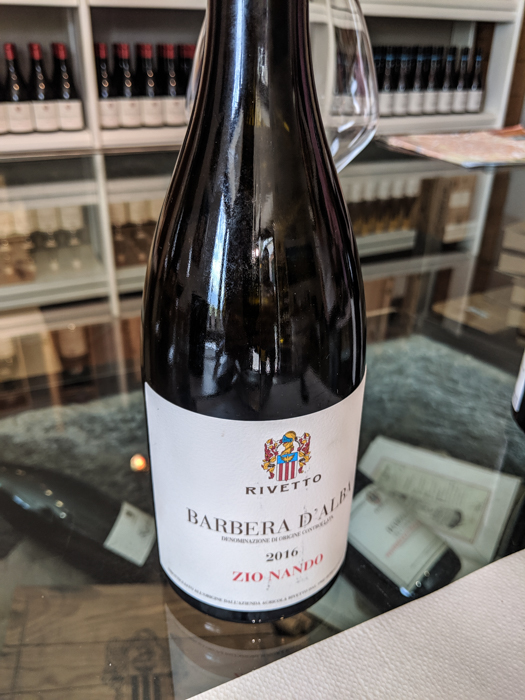
Next, the 2016 Zio Nando Barbera. Almost one third of the grapes used in “Uncle” Nando Barbara were planted in 1944. As often used here in Piedmont, these vines are green harvested in late summer, eliminating 4 bunches out of every 8 to focus the vines energy on fewer, higher quality bunches. 100% Barbera, aged 18 months in large oak barrel, an additional 1 year in the bottle, with a powerful aroma of dark berries and cherry. Intensely colored, well-structured and smooth for the perfect every day wine. Enjoy with salami and cheese, parmigiana, vitello tonnato.
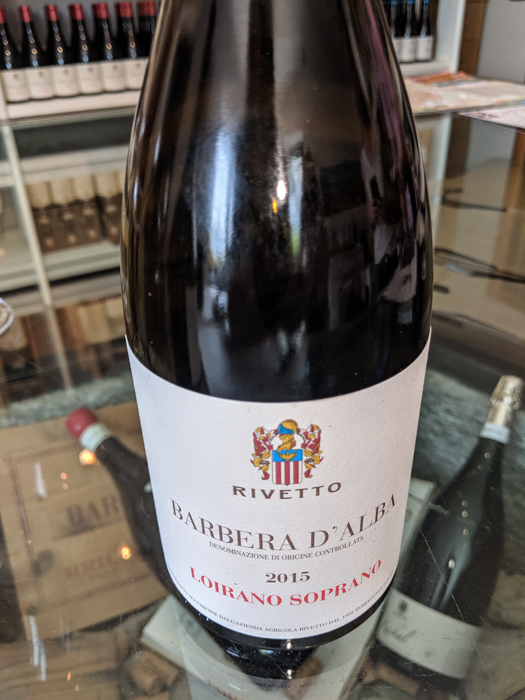
A second Barbera d’Alba follows, the 2015 Loirano Soprano. The Loirano Soprano wine is made from grapes grown in the upper part of Zio Nando vineyard situated at the top of Lirano hill. These conditions guarantee a wine with a potency and refinement that is unique in Langa. In addition, aggressive green harvesting (8 bunches to 3) insures optimal tannic and aromatic development. This wine is produced only in the best vintages for Barbera grapes – Barbera loves heat. 100% Barbara, aged 24 months in oak, 1 year in the bottle. A bright and an intense red, with pleasant floral notes of dark fruit and violets. Refined palate with firm tannins. Pair with salami, robiola, spicy food, pasta with meat sauce.
On to Nebbiolo. The first is their Langhe DOC Nebbiolo. Rivetto stopped producing wines from the indigenous Dolcetto grape, but needed a wine to replace its position as an every day table wine to enjoy daily with lighter foods and pastas. Made from the middle third of the harvest, An extremely pleasing and drinkable wine. Lighter red in color, with aromas of cherry and violets. Good body, smooth tannins. Enjoy with vitello tonnato, tajarin and ravioli, white meats.
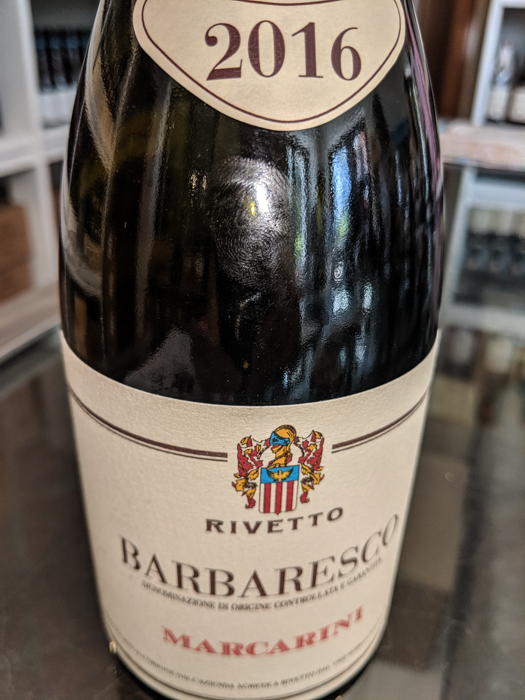
Barbaresco. Rivetto is an historical winery, so they can produce Barbaresco at their production facility in Barolo as long as the grapes are grown in Barbaresco, of course. After a long search, they found a supplier partner that follows their preferred organic approach. 100% Nebbiolo, aged for 2 years in oak, 70% in Slovenian, 30% in French, followed by 1 year in the bottle. Ruby red in color with flecks of orange. Clear delicate aromas of fruit with floral notes. Good structure and finesse, pronounced tannins typical of the Marcarini area near Treiso. Enjoy with ossobuco, rabbit, aged cheese, gnocchi with Castelmagno cheese.
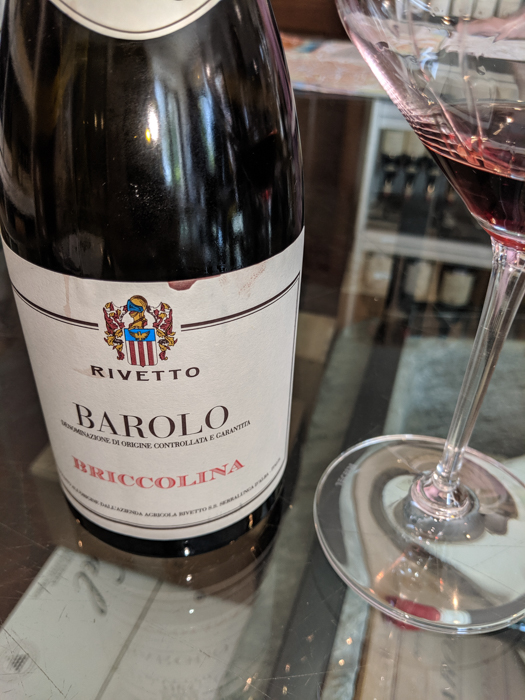
On to Barolo. We start with the 2014 Briccolina. Briccolina is the pioneer vineyard for Rivetto’s biodynamic approach, introduced here in 2015. This is a single vineyard wine, maceration of at least 50 days with a single punch down in that time. It has aged for 36 months in oak followed by 18 months in the bottle. It is expected to be best around 2025. Bright ruby red with orange rhues, a delicate bouquet of florals and spice. The palate is dry and refined, well-balanced with elegant tannins that will age well. Best with bollito misto, rabbit, braised meat.
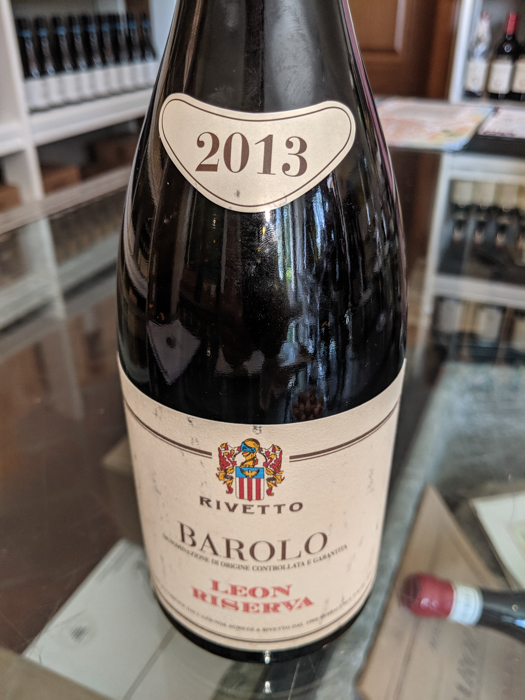
Next their 2013 Leon Riserva Barolo. 100% Nebbiolo from vineyards in Serralunga. After 5 years of aging, Barolo may use the title of “Reserve”. After 45 months in large barrels, the wines from each barrel are tasted and only those showing the greatest potential for ageing are used for the Leon Riserva. Aromas of red berries, rose and licorice, with flavors of cherry and raspberries. Smooth, well-balanced, with elegant tannins. Ageing will continue to smooth out the tannins and develop the bouquet. At its best after 15-20 years. Pair with red meats, lamb, game, aged cheese, everything with truffle.
Biljana then finishes the tasting with a small taste of the 2001 Leon Riserva. This side by side tasting demonstrates how beautifully these Barolos develop over time. The bouquet is more intense, more complex with notes of licorice and violent. On the palate, more interesting flavors emerge, leather, sour cherries, minerality. The tannins are refined and oh so smooth. A perfect ending.
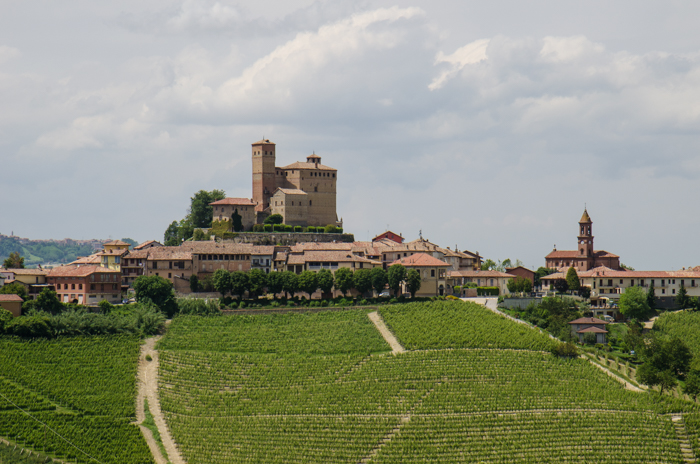

Pingback: Rivetto Wines – Bringing Sustainability to the Heart of the Langhe – Lajawab Recipes